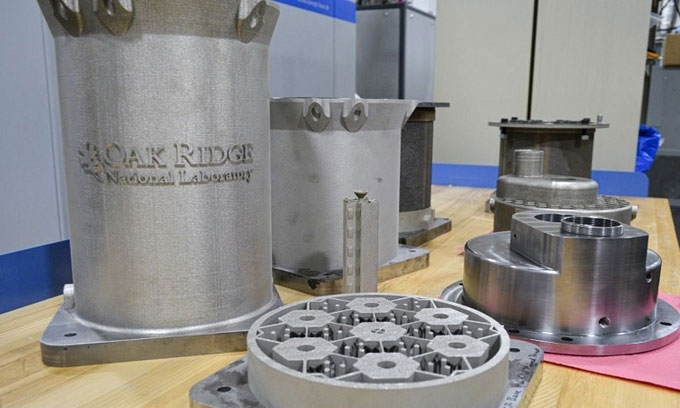US printed 3D nuclear reactor core
Nuclear power plants can be built faster at lower costs using 3D printing reactor cores.
The US Department of Energy's Oak Ridge National Laboratory developed the core of a 3D-printed nuclear reactor core in the Transformational Challenge Reactor (TCR) program . The ultimate goal of the researchers is to create a high-end 3D printing reactor that integrates sensors and control buttons, including fewer parts by 2023.

3D printing part of reactor prototype. (Photo: New Atlas).
According to the World Nuclear Association, the United States has 98 nuclear reactors operating in 30 states, providing 20% of the nation's energy demand without carbon emissions. Most reactors use technology more than 50 years old. Only one reactor has been built in the last 20 years. Many other furnaces are about to stop operating in the next two decades.
Replacing these reactors is extremely difficult and costly task for a variety of reasons, but the biggest reason is that commercial reactors in the US are often large civil projects that take decades to design. , develop, manufacture, deploy, test, license and operate.
The TCR program aims to speed up the process by cutting costs dramatically by taking advantage of high-temperature 3D printing, high-end material combinations and modern reactor designs. According to ORNL, the result was that the team only took 3 months to produce the prototype reactor core.
"We have been actively developing the ability to make this program a reality in the past few months. Our efforts demonstrate this technology is ready for 3D reactor core printing , " said Kurt Terrani, director. TCR's engineering, said.
The program is currently at the stage of refining prototype design, using artificial intelligence (AI) to constantly monitor during the production process to evaluate materials and performance. If successful, ORNL believes that this technology could rapidly change the nuclear power industry.
- There was once a nuclear reactor flying above our heads
- NASA: Mars nuclear reactor was successfully tested
- China successfully tested 'Artificial Sun'
- Detecting a molten nuclear fuel at Fukushima
- Conceptual design of large plutonium nuclear reactor
- 13 years old to build a nuclear reactor
- Successfully built Stellarator-type thermonuclear reactor
- The Devil's core - the nuclear radioactive core has killed two scientists
- Mysterious uranium from Hitler's nuclear reactor
- NASA successfully tested Mars's nuclear reactor
- Japan will restart the nuclear reactor safely
- Ikata nuclear plant passes an earthquake test
 The US company is about to build a supersonic passenger plane of 6,000km / h
The US company is about to build a supersonic passenger plane of 6,000km / h Japan develops avatar robot as in fiction film
Japan develops avatar robot as in fiction film Australia tested the world's first mango picking robot
Australia tested the world's first mango picking robot America develops technology to separate water from animal waste
America develops technology to separate water from animal waste